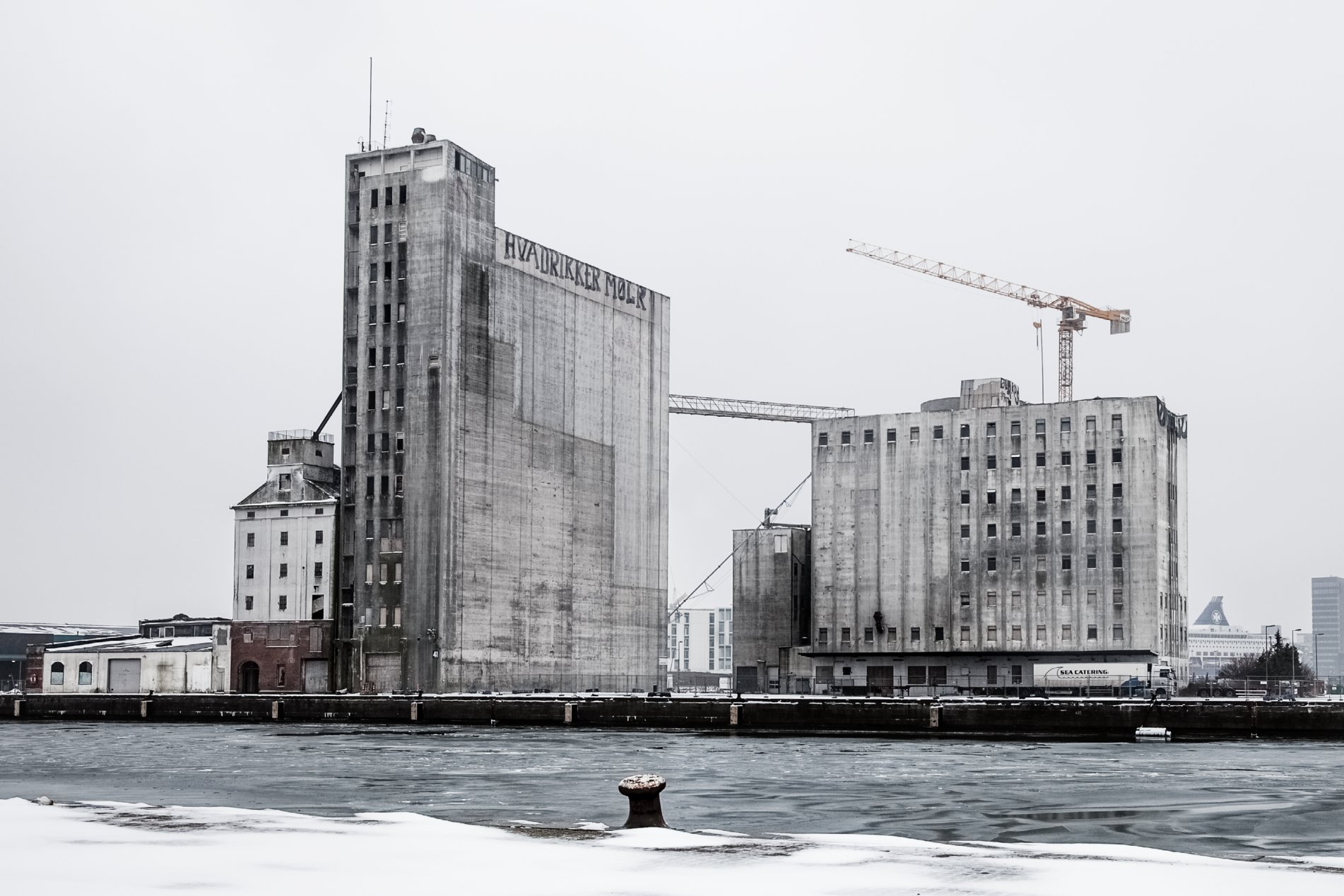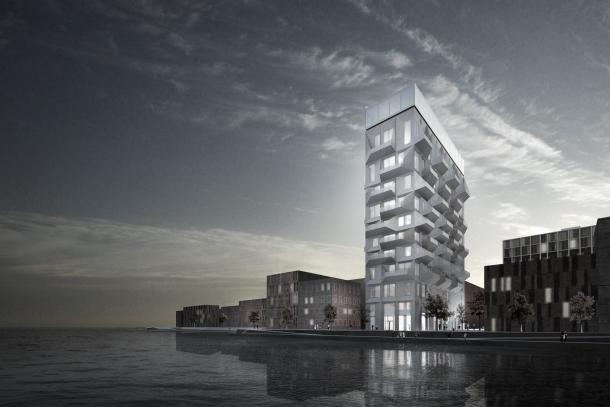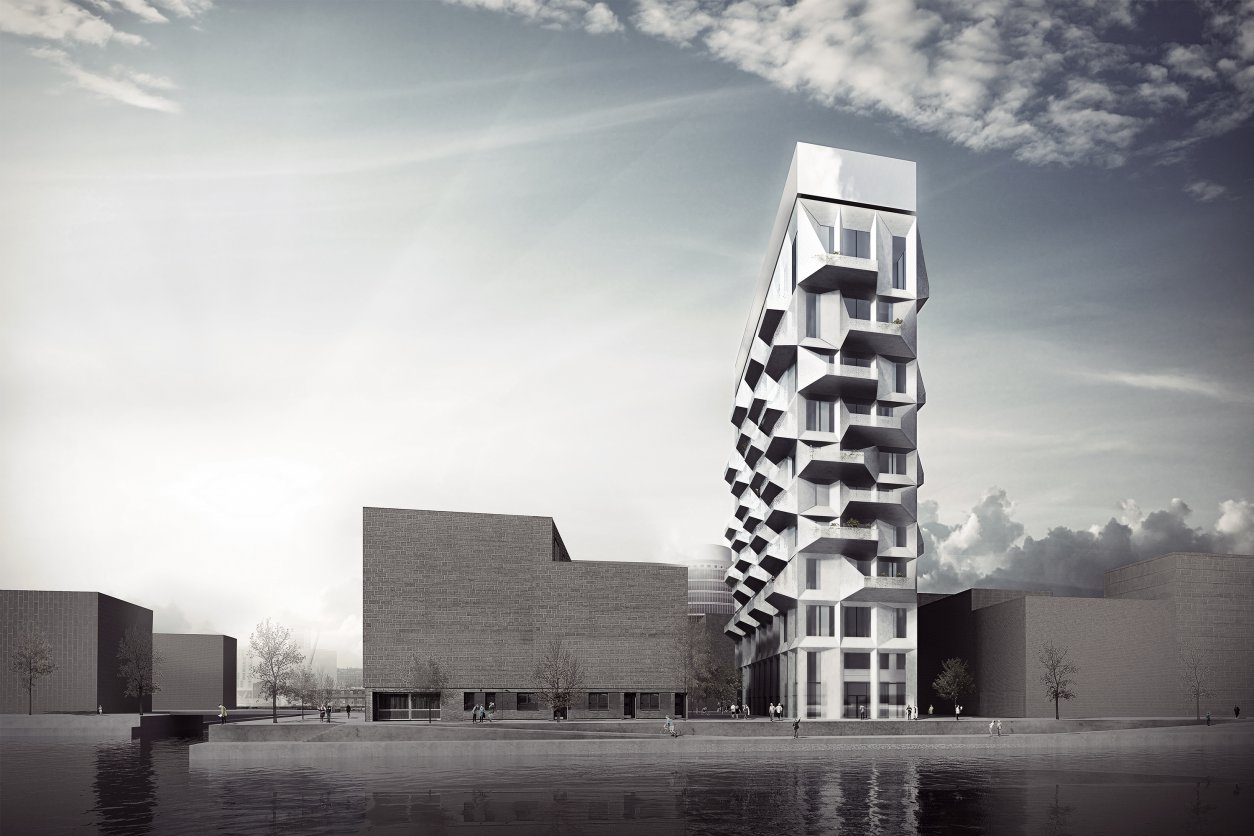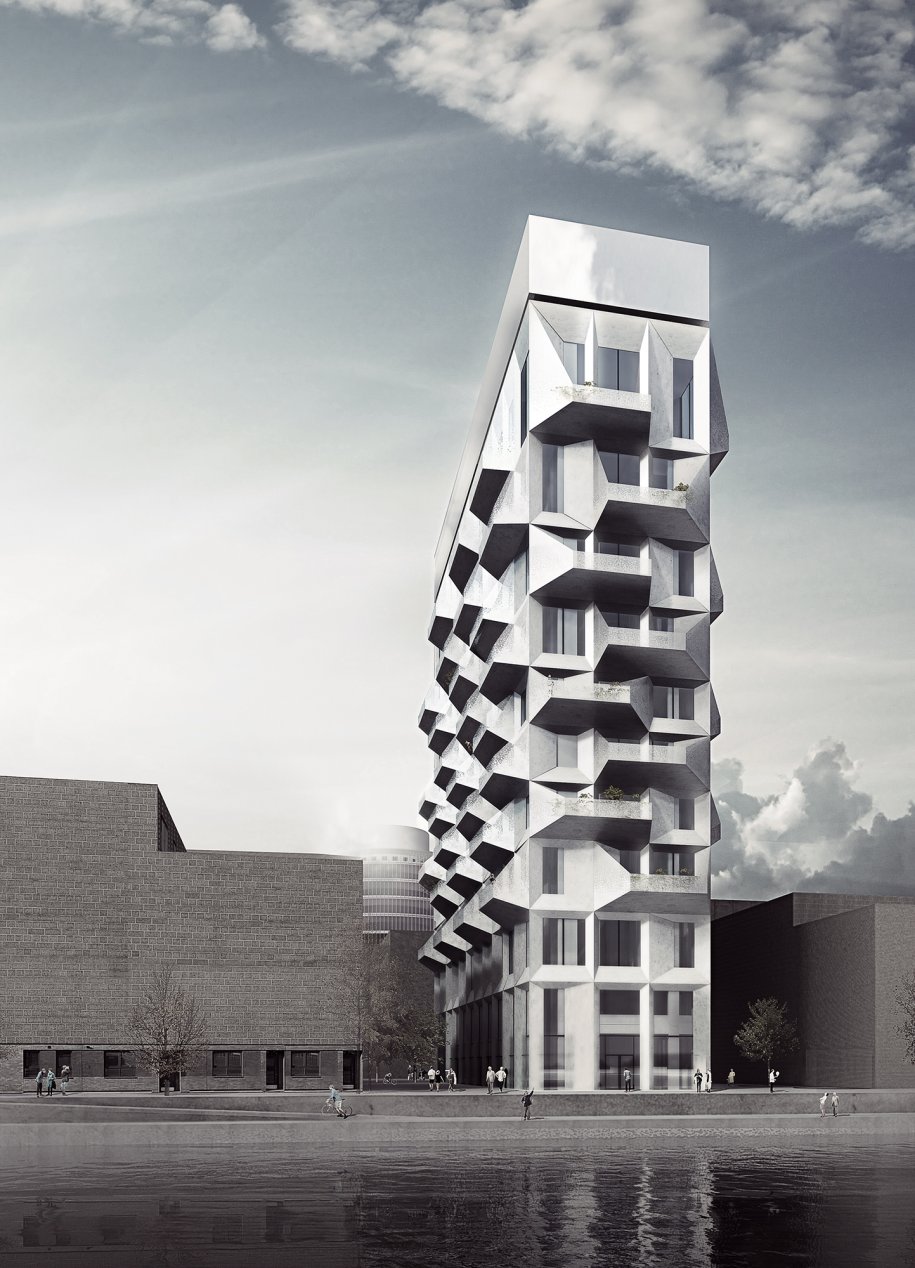A 200-foot-tall, 17-story industrial silo in Copenhagen’s Nordhavnen harbor is the largest and one of the most iconic landmarks of the area, but its function doesn’t match the needs of the district.
In 2013, By og Havn, a port development enterprise jointly owned by the city of Copenhagen and the Danish government, took the lead to transform Nordhavnen into a bustling, commercial area planned to bring tens of thousands of apartments and jobs.
Part of the transformation would involve the iconic silo’s conversion into a residential tower. Danish firm COBE Architects was brought in to execute the project, according to a report by Inhabitat.
To soften the industrial and highly utilitarian design of the original structure—which was used to store corn and grains for decades—COBE will envelope the original concrete structure with layers of different-sized white balconies.
The building’s interior will preserve the mostly exposed concrete of the original structure.

The silo as it exists today. Photo courtesy COBE Architects

Rendering of the planned conversion. Rendering courtesy COBE Architects
Because of the building’s original function and demand for different-sized spaces for storage, the new residential building will feature a variety of apartment configurations and sizes.
The waterfront development includes a United Nations campus called UN City that opened in 2013 at the eastern part of the Nordhavnen area.
According to Danish engineering website Ingeniøren, the Nordhavnen project uses 28,000 tons of steel, making it the largest construction job in Denmark and the largest consumer of steel in Northern Europe.
For more information and renderings, checkout the slideshow at cobe.dk.
Related Stories
AEC Tech Innovation | Apr 27, 2023
Does your firm use ChatGPT?
Is your firm having success utilizing ChatGPT (or other AI chat tools) on your building projects or as part of your business operations? If so, we want to hear from you.
Concrete Technology | Apr 24, 2023
A housing complex outside Paris is touted as the world’s first fully recycled concrete building
Outside Paris, Holcim, a Swiss-based provider of innovative and sustainable building solutions, and Seqens, a social housing provider in France, are partnering to build Recygénie—a 220-unit housing complex, including 70 social housing units. Holcim is calling the project the world’s first fully recycled concrete building.
Multifamily Housing | Apr 21, 2023
Arlington County, Va., eliminates single-family-only zoning
Arlington County, a Washington, D.C., community that took shape in the 1950s, when single-family homes were the rule in suburbia, recently became one of the first locations on the East Coast to eliminate single-family-only zoning.
Architects | Apr 21, 2023
Architecture billings improve slightly in March
Architecture firms reported a modest increase in March billings. This positive news was tempered by a slight decrease in new design contracts according to a new report released today from The American Institute of Architects (AIA). March was the first time since last September in which billings improved.
Green | Apr 21, 2023
Top 10 green building projects for 2023
The Harvard University Science and Engineering Complex in Boston and the Westwood Hills Nature Center in St. Louis are among the AIA COTE Top Ten Awards honorees for 2023.
Multifamily Housing | Apr 19, 2023
Austin’s historic Rainey Street welcomes a new neighbor: a 48-story mixed-used residential tower
Austin’s historic Rainey Street is welcoming a new neighbor. The Paseo, a 48-story mixed-used residential tower, will bring 557 apartments and two levels of retail to the popular Austin entertainment district, known for houses that have been converted into bungalow bars and restaurants.
Design Innovation Report | Apr 19, 2023
Reinforced concrete walls and fins stiffen and shade the National Bank of Kuwait skyscraper
When the National Bank of Kuwait first conceived its new headquarters more than a decade ago, it wanted to make a statement about passive design with a soaring tower that could withstand the extreme heat of Kuwait City, the country’s desert capital.
Design Innovation Report | Apr 19, 2023
HDR uses artificial intelligence tools to help design a vital health clinic in India
Architects from HDR worked pro bono with iKure, a technology-centric healthcare provider, to build a healthcare clinic in rural India.
Design Innovation Report | Apr 19, 2023
Meet The Hithe: A demountable building for transient startups
The Hithe, near London, is designed to be demountable and reusable. The 2,153-sf building provides 12 units of business incubator workspace for startups.
Metals | Apr 19, 2023
Sherwin-Williams Coil Coatings releases new color forecast for architectural metal coatings
The Coil Coatings division of Sherwin-Williams has released its latest color forecast, FUSE, for architectural metal coatings. The report aims to inspire architects, product manufacturers and original equipment manufacturers (OEMs) in the coil and extrusion market over the next 3-5 years and beyond.






















